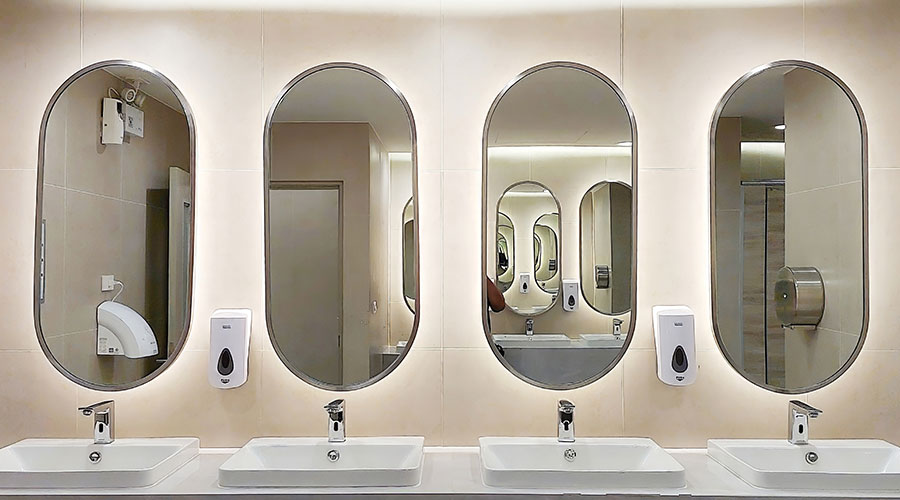Water Conservation Case Studies
Utility Confronts Hotel Water Usage
San Antonio Water System (SAWS) has partnered with local hotels to help them save "domestic water" — to use the EPA's classification for any water consumption related to non-laundry washing, showering and toilet use.
"We'll partner with hotels and help pay a portion of the retrofit costs," says Sarah Gatewood, SAWS communication specialist. The rebate program pays for 50 percent of the equipment cost and requires annual reports of water consumption for the first five years after installation.
Hotels are a good place to start for San Antonio. According to SAWS, San Antonio has the fastest hotel development rate in the nation.
Moreover, a study by the American Hotel & Lodging Association finds that the average hotel consumes about 209 gallons of water per occupied hotel room each day — almost as much as the 243 gallons consumed by the typical U.S. household.
When SAWS assisted San Antonio's Hilton Palacio Del Rio, the hotel and utility collaborated to retrofit hundreds of toilets, faucets and showerheads, along with 15 water-cooled ice machines.
The project cut the daily water use for occupied rooms nearly in half, to 107 gallons per day, says Gatewood.
The utility funded nearly all of the $170,000 retrofit cost, and its payback from the project was less than 13 months.
Water Problems in Cobb County
Two very severe droughts in the greater Atlanta area during the last decade have made the region's water utilities increasingly sensitive to water efficiency. That issue is exacerbated by a recent federal court ruling on Lake Lanier: Beginning in July 2012, the Atlanta region will no longer have water rights to Lake Lanier. Instead, the water will be diverted to users in Alabama and Florida. The ruling is being appealed.
"If the appeal fails, we'll be looking at a shortfall of 282 million gallons per day," says Kathy Nguyen, senior project manager for the Cobb County Water System.
With that potential shortfall looming on the horizon, initial efforts at curtailing water use targeted residential customers. Increasingly, however, Nguyen says Cobb County schools are replacing high-flow fixtures in a bid to save costs.
Noting that schools have historically deferred replacement, Nguyen says that one school was using a garden hose in place of a pre-rinse spray nozzle.
Her school audit uncovered other ways that the middle school — which was using 13,550 gallons per day during the school year — could save money.
Nguyen also recommended that the school install low-flow aerators in the sink faucets that had high-flow or no aerators for a payback measured in days, not months or years.
The other projects, including retrofitting toilet flushometers, low-flow and waterless urinals, and kitchen spray system changes, all had paybacks of two to five years for the school.

Loren Snyder, a contributing editor for Building Operating Management, is a writer who specializes in facility issues. He was formerly managing editor of Building Operating Management.
Related Topics:













